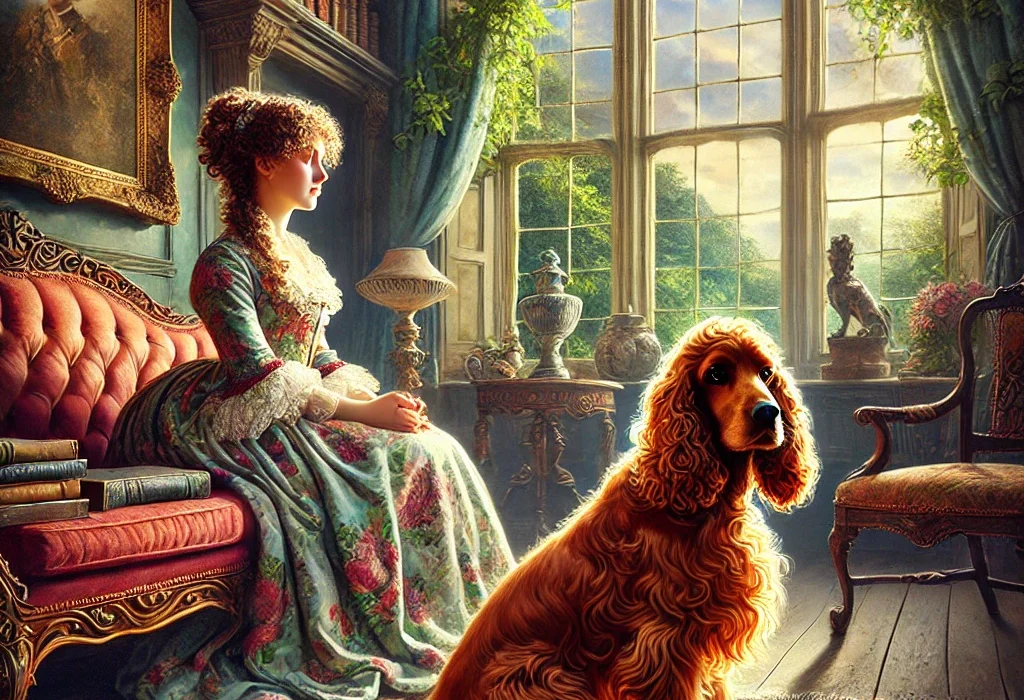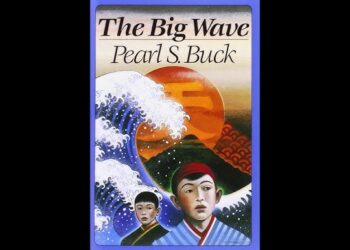Introduction
Summary of Flush: A Biography by Virginia Woolf Virginia Woolf’s “Flush: A Biography,” published in 1933, is a unique narrative that combines elements of biography, fiction, and literary criticism. The novel tells the story of Flush, the beloved cocker spaniel of the Victorian poet Elizabeth Barrett Browning, through a lens that captures both the personality of the dog and the intricacies of the human world surrounding him. Woolf’s innovative approach provides a fascinating exploration of identity, love, and the relationship between humans and animals, while also reflecting on the societal dynamics of the time.
Summary of Flush: A Biography by Virginia Woolf Woolf’s work stands out for its rich characterizations and vivid descriptions, inviting readers to engage with the story on both emotional and intellectual levels. Through Flush’s perspective, the novel examines themes of class, gender, and artistic creation, revealing the complexities of life in the Victorian era.
Summary
1. Overview and Structure
“Flush” is structured as a biography, but it is more than a straightforward account of a dog’s life. Woolf employs a stream-of-consciousness style that captures Flush’s thoughts, emotions, and perceptions, providing readers with an intimate view of his experiences. The narrative blends factual elements of Flush’s life with fictionalized accounts, reflecting Woolf’s creative reinterpretation of history.
The story begins with Flush’s early life, detailing his upbringing in the affluent household of the Barrett family. As a dog with a privileged position, Flush enjoys a comfortable life filled with love and attention. However, the narrative quickly shifts to explore the complexities of his relationships, particularly with his owner, Elizabeth Barrett Browning.Summary of Flush: A Biography by Virginia Woolf
READ MORE
2. Flush’s Early Life
Summary of Flush: A Biography by Virginia Woolf Summary of Flush: A Biography by Virginia WoolfFlush is introduced as a playful and spirited cocker spaniel who embodies the carefree essence of a dog’s life. He is well-cared for by his family, particularly by Elizabeth Barrett, who has a deep emotional bond with him. Flush’s perspective allows readers to experience the world through his senses, capturing the joys of companionship, exploration, and the simple pleasures of life.
Woolf skillfully portrays Flush’s character, emphasizing his loyalty, intelligence, and sensitivity. Through his eyes, readers witness the affection he receives from Elizabeth and her family, highlighting the warmth of their household. However, Woolf also subtly hints at the underlying tensions and complexities of their lives, foreshadowing the challenges that will arise as the narrative unfolds.

3. Elizabeth Barrett Browning: Flush’s Owner
Summary of Flush: A Biography by Virginia Woolf As Flush’s primary caregiver, Elizabeth Barrett Browning emerges as a central figure in the narrative. Woolf draws upon historical facts about Browning’s life and literary career, intertwining them with Flush’s experiences. Elizabeth is depicted as a sensitive and passionate woman, grappling with societal expectations and personal struggles.
Woolf explores Elizabeth’s creative process and the emotional turmoil she faces due to her health issues and her overprotective father. Flush becomes not only her companion but also a source of comfort and inspiration, reflecting the deep connection between them. This relationship highlights the bond between humans and animals, emphasizing how pets can provide solace and companionship during difficult times.
READ MORE
4. The Influence of Robert Browning
Summary of Flush: A Biography by Virginia Woolf The arrival of Robert Browning, Elizabeth’s future husband, marks a significant turning point in the narrative. Flush is initially wary of Robert, sensing the changes he brings to Elizabeth’s life. Woolf portrays Robert as a charismatic and dynamic figure who deeply influences Elizabeth’s emotional and creative world.
As Elizabeth and Robert’s relationship develops, Flush’s role shifts. He becomes a silent observer of their love story, grappling with feelings of jealousy and insecurity. Woolf captures the tension between Flush’s loyalty to Elizabeth and his growing acceptance of Robert, illustrating the complexities of love and companionship.Summary of Flush: A Biography by Virginia Woolf
5. Flush’s Experiences in Society
Woolf uses Flush’s perspective to explore the broader social context of Victorian society. Through Flush’s encounters with different characters, readers gain insight into the class dynamics and gender roles of the time. Flush’s experiences reflect the societal norms that govern human behavior, highlighting the limitations imposed on women and the expectations placed upon men.
Flush navigates the social landscape of London, encountering various figures who embody different aspects of Victorian society. Woolf’s portrayal of these interactions allows for a critique of social conventions, particularly in relation to class and gender. The narrative reveals the complexities of human relationships and the impact of societal structures on individual lives.
6. Themes of Identity and Belonging
Summary of Flush: A Biography by Virginia Woolf As Flush grapples with his identity throughout the narrative, the themes of belonging and displacement emerge. Woolf uses Flush’s experiences to explore the concept of identity—both for Flush as a dog and for Elizabeth as a woman navigating the constraints of her time. Flush’s desire for acceptance and understanding mirrors Elizabeth’s own struggles with her identity as a poet and a woman in a patriarchal society.
Woolf captures Flush’s internal conflicts as he seeks to find his place within the changing dynamics of his household. His shifting loyalties reflect Elizabeth’s own journey of self-discovery, as she learns to assert her independence and navigate the complexities of her relationships.
7. The Evolution of Relationships
The evolution of relationships is a central focus in “Flush.” Woolf portrays the complexities of love, friendship, and loyalty through the interactions between Flush, Elizabeth, and Robert. The dynamics of their relationships shift as Flush navigates the changes brought about by Elizabeth’s marriage to Robert.
Woolf explores the nuances of love, depicting how it can bring joy and pain simultaneously. Flush’s experiences mirror the emotional rollercoaster of human relationships, highlighting the intricate connections between love, loyalty, and the struggle for identity.
8. Flush’s Displacement and Change
Summary of Flush: A Biography by Virginia Woolf As Elizabeth and Robert’s relationship deepens, Flush experiences feelings of displacement. He struggles to reconcile his role as Elizabeth’s companion with the changes that Robert brings to their lives. Flush’s emotional turmoil reflects Elizabeth’s own struggles to adapt to her new identity as a wife and poet.
Woolf captures Flush’s moments of vulnerability, allowing readers to empathize with his internal conflicts. The theme of displacement resonates throughout the narrative, illustrating how love can alter relationships and force individuals to confront their identities.Summary of Flush: A Biography by Virginia Woolf Summary of Flush: A Biography by Virginia Woolf
READ MORE
9. Flush’s Final Years
The latter part of the novel follows Flush into his later years, reflecting on the passage of time and the inevitability of change. Flush becomes a symbol of loyalty and resilience, weathering the ups and downs of Elizabeth and Robert’s life together. Woolf poignantly depicts Flush’s aging process, emphasizing the bond that remains between him and Elizabeth despite the challenges they face.
As Elizabeth’s health declines, Flush’s loyalty is unwavering. He embodies the themes of love, companionship, and the impact of time on relationships. Woolf captures the bittersweet nature of aging, illustrating how love endures even in the face of loss. Summary of Flush: A Biography by Virginia Woolf
10. The Significance of Flush’s Life
Through Flush’s life, Woolf explores the broader themes of art, identity, and the relationship between humans and animals. Flush’s experiences serve as a reflection of Elizabeth’s struggles as a poet and a woman seeking her voice in a male-dominated society. Woolf highlights the connections between creativity, love, and companionship, illustrating how these elements intertwine in the lives of individuals.
The novel serves as both a tribute to Flush and an exploration of the human condition, capturing the complexities of life and the enduring bonds that transcend species. Woolf’s unique narrative style and rich characterizations invite readers to reflect on the significance of love, loyalty, and the search for identity.

Conclusion
Summary of Flush: A Biography by Virginia Woolf “Flush: A Biography” is a remarkable work that combines fiction, biography, and literary critique, offering a fresh perspective on the life of a beloved dog and his owner, Elizabeth Barrett Browning. Through Flush’s eyes, Woolf delves into the complexities of identity, love, and the social dynamics of Victorian society. The novel stands as a testament to Woolf’s innovative narrative techniques and her ability to explore profound themes through the lens of an unconventional protagonist.
Woolf’s exploration of Flush’s experiences encourages readers to reflect on their own relationships and the connections they share with the world around them. The novel’s rich tapestry of characters and themes makes it a compelling and thought-provoking read, solidifying Woolf’s place as a pioneering voice in modernist literature.
FAQ
1. What is “Flush: A Biography” about?
The novel is a fictionalized biography of Flush, the cocker spaniel belonging to poet Elizabeth Barrett Browning. It explores themes of identity, love, and the relationship between humans and animals.
2. Who is the protagonist of the story?
The protagonist is Flush, Elizabeth Barrett Browning’s beloved cocker spaniel, who serves as the lens through which the narrative unfolds.
3. How does Woolf portray Elizabeth Barrett Browning in the novel?
Woolf depicts Elizabeth as a sensitive and passionate woman navigating societal expectations, with Flush as her companion who provides comfort and inspiration.
4. What role does Robert Browning play in the story?
Robert Browning is Elizabeth’s husband, whose arrival alters the dynamics of Elizabeth and Flush’s lives, introducing themes of love, jealousy, and adaptation.
5. What themes are explored in “Flush”?
The novel explores themes of identity, belonging, love, loyalty, and the societal dynamics of Victorian England.
6. How does Woolf use Flush’s perspective in the narrative?
Woolf employs Flush’s perspective to capture the emotional landscape of his experiences, allowing readers to empathize with his thoughts and feelings.
7. What is the significance of Flush’s relationship with Elizabeth?
Flush’s relationship with Elizabeth reflects the bond between humans and animals, illustrating how companionship can provide solace and understanding amid personal struggles.
8. How does the novel address issues of class and gender?
Through Flush’s interactions and observations, Woolf critiques the social conventions of Victorian society, highlighting the limitations imposed on women and the expectations placed upon men.
9. What is the narrative style of “Flush”?
The novel features a stream-of-consciousness style, allowing readers to delve into Flush’s thoughts and emotions while blending factual elements with fictionalized accounts.
10. What can readers learn from “Flush”?
Readers can reflect on the complexities of love, the significance of companionship, and the enduring bonds that transcend species, encouraging deeper connections with the world around them.
READ MORE

















